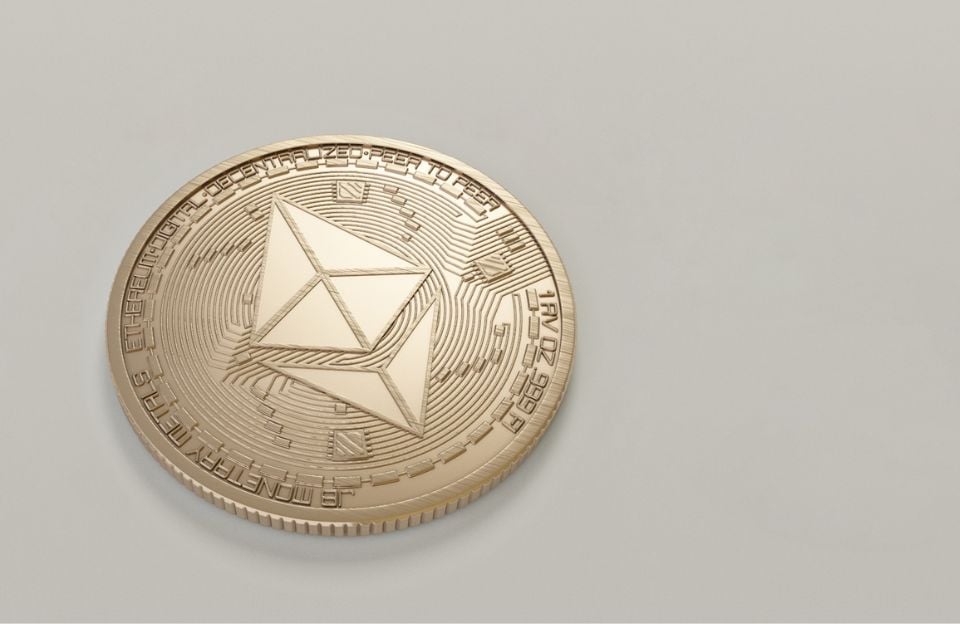Luis Clark
What is Blockchain and How does It Work?
Luis Clark

What is Blockchain?
A blockchain is a decentralized, distributed, and public digital ledger that records transactions across numerous computers in a verifiable and permanent manner so that the record cannot be changed retrospectively without changing all subsequent blocks and receiving network consent. This reduces risk and eliminates some of the processing and transaction fees.
Blockchain has taken on a new character in the business world while being best known as the technology that powers the Bitcoin digital currency. It’s emerging as a way for businesses to instantly make and verify transactions over a network without a central authority when they face significant data management and security issues.
Today, more than 40 of the world’s leading financial institutions and an increasing number of businesses from all sectors are testing distributed ledger technology as a safe and open means to monitor asset ownership digitally. This experimentation has the potential to speed up transactions, reduce costs, and lessen the risk of fraud. Some businesses use blockchain technology to monitor asset flow throughout their supply chains or electronically initiate and enforce contracts.
Blockchain technology is a cutting-edge database system that permits open information exchange inside a business network. Data is kept in blocks connected in a chain and stored in a blockchain database. The blockchain makes it incredibly challenging to cheat or exploit the system by dispersing identical copies of a database throughout an entire network. The system provides built-in safeguards against unauthorized transaction submissions and ensures that the shared view of these transactions is consistent.
While cryptocurrency remains the top choice for blockchain use nowadays, this technology has vast potential for various other applications. Let’s delve into understanding what blockchain is, how it functions, its different uses, and how it ensures security, among other aspects.
What is Blockchain and why is called a blockchain?

Blockchain technology is a distributed, decentralized ledger that keeps track of who owns which digital assets. Blockchain technology is a viable disruptor for markets, including payments, cybersecurity, logistics and healthcare, because no data stored can be changed. Blockchain, sometimes referred to as distributed ledger technology, operates with the help of many participants. Each “block” in a chain comprises several documents that explain previous and current transaction data and are all encrypted. Thanks to cryptography, data is stored and transmitted using encrypted formats (the Greek word Kryptos means hidden).
Blockchain technology is the concept or system that governs how a blockchain works. Blockchain technology enables cryptocurrencies like Bitcoin, just as the Internet enables everything.
The blockchain is an immutable distributed digital ledger (a digital record of transactions or data kept across numerous places on a computer network) that goes beyond cryptocurrencies. Immutable and distributed are two basic blockchain properties. You can always rely on the ledger’s accuracy because of its immutability. All network users have access to the distributed ledger and its unalterable record of transactions. With this shared ledger, transactions are only ever recorded once, eliminating the need for traditional business networks’ duplication of effort.
The distributed nature of the blockchain shields it from network intrusions. Each entry or record on the ledger is kept in a separate “block”. For instance, blocks on the blockchain for Bitcoin typically contain more than 500 Bitcoin transactions. A chain of transactions is created over time due to the dependence and connections between the data in each block, which are linked to one another. Thus, the term “blockchain.”
Blockchain technology is an attractive proposition to records maintained on a central database. Risk and management are distributed among numerous users or “nodes.” Every participant has a “node” on the network and works together to keep track of transactions on an ongoing basis. This enables access to a shared, identical, irreversible ledger of transactions for all parties on the network. In other words, every node contributes to the management of the blockchain, including validating newly-added data. Each node can add new data to the database. Most nodes must agree to add new data to the blockchain, upholding the network’s security.
Why is Blockchain Important?
Due to its ability to scale transparency, eliminate fraud, and reduce security threats, blockchain is an incredibly revolutionary and exciting technology.
Blockchain technology first headlines in the 2010s due to its links to cryptocurrencies and NFTs; it has since developed into a management tool for various international sectors. Blockchain technology is currently being used to innovate games, secure healthcare data, provide transparency for the food supply chain, and fundamentally alter how we manage data and ownership.
Blockchain, at its heart, is a distributed digital ledger that stores all types of data. Cryptocurrency transactions, NFT ownership, or DeFi smart contracts can all be recorded on a blockchain.
Although this type of data can be stored in any traditional database, blockchain is special in that it is completely decentralized. Imagine an Excel spreadsheet or a bank database. Still, instead of being kept in one place by a single administrator, a blockchain database is held on numerous identical copies on numerous machines dispersed throughout a network. Nodes are the collective name for these distinct computers.
The challenges of capturing financial transactions using traditional database technologies are numerous. Take the sale of a property, for instance. The property belongs to the buyer once the money has been exchanged. The buyer and the seller can independently keep track of the financial transactions, but neither source can be relied upon. Both the buyer and the seller can claim that they have paid the money even when they haven’t, and both parties can readily deny doing so.
A responsible third party must monitor and verify transactions to prevent potential legal problems. The existence of this central authority not only makes the transaction more challenging but also establishes a weak spot. Both parties may be affected if the main database is compromised.
Blockchain eliminates these problems by developing a decentralized, tamper-proof system for transaction recording. Blockchain generates separate ledgers for both the buyer and the seller in the case of a real estate transaction. All transactions are subject to both parties’ approval and are automatically updated in real-time in their ledgers. Any tampering with earlier transactions will taint the entire catalogue.
Blockchain technology has special qualities that make it helpful in many different industries. It is even used to create virtual money, like Bitcoin, which can be used online for transactions.

Due to the decentralized nature of its technology, which is supported by numerous nodes that maintain the entire system and confirm a transaction before it becomes a part of the permanent record, blockchain is also seen as a helpful innovation. Some blockchain technology supporters see this characteristic as the most crucial one. This is because some who support blockchain technology think it makes it easier to build networks without a single point of failure.
Blockchain can make record keeping permanent, transparent, and innovative. For instance, everyone who wants to confirm a particular transaction can theoretically do so because a blockchain records the entire history of transactions. This is possible without compromising participant privacy or disclosing specifics of the records to participants who are not authorized to see them. Additionally, it is highly challenging for a bad actor to misrepresent or alter transaction data because entries on a blockchain cannot be changed.
A blockchain transaction must be validated by numerous nodes, which might lower errors. The other nodes would notice something is off and recognize the error if one node has a database error. Blockchain is a shared, immutable ledger that facilitates the process of recording transactions and tracking assets in a business network. Although a blockchain serves primarily as a database for recording transactions, it offers many advantages over conventional databases. Most significantly, it eliminates the chance of tampering with a bad actor and offers these business advantages.
Features of Blockchain

The key characteristics of blockchain technology are as follows:
1. Decentralization
In the context of the blockchain network, decentralization refers to the transfer of power and responsibility from a centralized entity (an individual, an organization, or a group) to a dispersed network. Transparency in decentralized blockchain networks helps players build less trust in one another. These networks also prevent users from interfering with one another in ways that impair the network’s performance.
2. Immutability
Something can never be altered or changed if it is immutable. Once someone has added a transaction to the shared ledger, it cannot be changed by another participant. To correct an error in a transaction record, you must add a new transaction, and both transactions are accessible to the network.
3. Consensus
A blockchain system creates regulations about participant consent for transaction recording. Only until most network users have approved can new transactions be recorded.
4. Transparency
Due to the decentralized structure of the Bitcoin blockchain, all transactions may be transparently observed by utilizing blockchain explorers, which enable anybody to examine transactions as they happen in real-time or by owning a personal node. As new blocks are added and confirmed, each node’s copy of the chain is updated. This implies that you might follow Bitcoin wherever it goes if you so desire.
As an illustration, exchanges have previously been hacked, and anyone who had Bitcoin stored there lost everything. The stolen Bitcoins are clearly identifiable, despite the hacker’s complete anonymity. It would be known if any of the Bitcoins taken in some of these hacks were transferred or used elsewhere.
Naturally, the data kept on the Bitcoin blockchain (as well as the majority of others) is encrypted. This implies that only the record’s owner will be able to decode the file and expose their identity (using a public-private key pair). As a result, blockchain users can maintain their anonymity while maintaining transparency.
Types of Blockchain Network

The blockchain systems consist of four different categories of decentralized or distributed networks:
1. Public blockchain network
Public blockchain networks are permissionless networks that are accessible to everyone, making them open systems. Anyone can join the network, read, write, or participate in the public blockchain networks.
A public blockchain network runs on an incentive system that motivates new users to sign up and maintain the network’s flexibility. From the perspective of an operation that is really decentralized, democratized, and authority-free, public blockchains present a particularly attractive answer.
2. Private blockchain network
A single organization controls private blockchain networks, also called managed blockchains. The authorities decide who is eligible to join the network and their privileges. Due to access limitations, private blockchains are only partially decentralized. The digital currency exchange network exemplifies a private blockchain for businesses known as Ripple.
A private blockchain is made out of a permission network (Permissioned blockchain) where known users verify transactions to gain consensus through a process known as “selective endorsement.” Businesses that create a private blockchain typically create a permissioned blockchain network. Businesses benefit from this since only users with the necessary access and permissions may maintain the transaction ledger. Running a private blockchain behind a company firewall and even hosting it on-site networks are also options. Frequently used networks on blockchains with permission Businesses that create a private blockchain typically make a network that is permissioned.
3. Hybrid blockchain network
Blockchain networks that are hybrids combine components from both public and private networks. Businesses can set up private, permission-based systems along with a public system. They maintain public access to the remaining data while controlling access to some data that is kept on the blockchain in this way. They deploy smart contracts to enable public users to verify whether private transactions have been performed. For instance, hybrid blockchains can allow public access to digital currency while maintaining the confidentiality of currency held by banks.
4. Consortium blockchain network
A collection of institutions governs consortium blockchain networks. Preselected organizations jointly maintain the blockchain, which also decides on data access privileges. Industry sectors that benefit from shared responsibility and have several entities with similar goals sometimes favor consortium blockchain networks. For instance, the Global Shipping Business Network Consortium is a non-profit blockchain consortium aiming to digitize the shipping sector and foster more operator cooperation in the maritime sector.
How Does Blockchain Work?

The name “blockchain” is not by chance: The digital ledger is sometimes depicted as a “chain” made up of distinct data “blocks”. A new “block” is made and attached to the “chain” each time new data is added to the network regularly. To achieve this, all nodes must update their copies of the blockchain ledger to match one another.
The key reason why blockchain is seen as being extremely safe is how these new blocks are formed. Before a new block is added to the ledger, most nodes must verify and affirm the legitimacy of the new data. They might verify that recent new transactions in a block are genuine or that coins haven’t been used more than once for a cryptocurrency. Each additional block strengthens the validation of the previous block and the entire blockchain. This gives the blockchain its crucial strength of immutability and makes it tamper-evident. A standalone database or spreadsheet, where one individual can make changes without supervision, is not the same as this.
The underlying transactions are added to the distributed ledger, and the block is added to the chain once consensus has been reached. From the start of the ledger until the present, “blocks are securely linked together, producing a secure digital chain”.
Typically, cryptography is used to safeguard transactions; thus, complex mathematical equations must be solved for nodes to complete a transaction. Nodes are often compensated with new amounts of the blockchain’s native currency, such as new bitcoin on the blockchain for the cryptocurrency bitcoin, as payment for their efforts in validating updates to the shared data.
Proof of Stake (PoS) vs. Proof of Work (PoW)
A public blockchain functions via consensus mechanisms: the procedure for validating transactions without a third party like a bank. These include the PoW and PoS mechanisms. While their end goal—to arrive at a consensus that a transaction is valid—remains the same, how they do so differs slightly.
PoW, or mining in technical parlance, was the first consensus algorithm. As of this writing, Bitcoin and Ethereum both continue to use it, although, as was already mentioned, Ethereum will switch to PoS around 2022. PoW is based on cryptography, which employs mathematical problems that computers can only solve.
PoW has two major drawbacks: it consumes a lot of electricity and can only handle a certain number of transactions simultaneously (seven for Bitcoin). The average transaction completion time is at least 10 minutes, which increases during busy network conditions. Although Bitcoin’s ten-minute delay is impressive, it pales compared to the days-long wait to clear a check or wire money worldwide.
PoS still uses cryptographic procedures for transaction validation, but a designated validator determines whether a transaction is valid depending on the number of coins it has or its stake.
Technically, no one is mining, and there is no block reward. Blocks are “forged” instead. By taking part in this process, a certain quantity of coins is locked on the network. The more a person’s stake, the greater their mining strength and the likelihood of being chosen as the validator for the upcoming block.
Other selection techniques ensure those with the most coins aren’t always chosen. These include coin age selection (forgers are picked based on how long they’ve held their coins) and randomized block selection (forgers with the highest stake and lowest hash value are chosen). Faster transaction speeds and cheaper costs are the outcomes. For instance, transactions can be sent and received in seconds using NEO and Dash cryptocurrencies.
While not strictly impossible, many cryptocurrency blockchain systems use PoS or PoW transaction verification techniques, which make it challenging and not in the participants’ best interests to add fraudulent transactions.
How is Blockchain Used?
From managing voting systems to offering financial services, blockchain technology is employed for a varied various
1. Cryptocurrency
Blockchain is frequently used as the foundation of cryptocurrencies like Bitcoin or Ethereum. All cryptocurrency purchases, trades, and expenditures are recorded on a blockchain. As more people use cryptocurrencies, blockchain technology may become more widely used.
Cryptocurrencies are still not widely used to purchase products and services because of their volatility. The availability of digital asset services to retailers and vendors is expanding thanks to companies like PayPal, Square, and other money service organizations.
2. Banking
Blockchain is utilized to execute transactions in fiat currency, such as dollars and euros, in addition to cryptocurrencies. Due to speedier transactions, verification and processing outside regular business hours are possibly quicker than using a bank/other financial institutions to send money. Transactions performed through a blockchain may be completed in a matter of seconds, and banking transfer fees may be decreased (or abolished). One of the best connected blockchain companies in the financial industry is Ripple with its XRP Ledger.
3. Asset Transfers
The ownership of various assets can also be tracked and transferred using blockchain technology. This is currently quite popular with digital assets like NFTs, a symbol of ownership of digital artwork and videos. Blockchain could also be used to handle the ownership of physical assets, such as the deed to real estate and vehicles. Both parties would use the blockchain for a transaction first to confirm who has the property and the funding before the sale could be finalized and recorded.
With this method, they could transfer the property deed without manually submitting documents to amend the county’s official records; instead, the blockchain would be instantly updated.
4. Smart Contracts
Self-executing contracts, sometimes known as “smart contracts,” are another blockchain breakthrough. Smart contracts are “an agreement or set of rules that govern a business transaction; they have completed automatically as part of a transaction and kept on the blockchain. they are kept on the blockchain and used networks they are held on the blockchain and
Once specific requirements are met, these digital contracts take effect automatically. For instance, after the buyer and seller have satisfied all requirements for an agreement, a payment for a good may be immediately released. The requirement for external third parties to verify performance can be reduced and eliminated by an adequately coded smart legal contract on a distributed ledger. The best smart contract platforms are currently Ethereum, Cardano, Solana, Avalanche and Flare Networks.
5. Supply chain oversight
Large volumes of information are involved in supply chains, mainly as items are transported across international borders. When using conventional data storing techniques, it can be challenging to identify the root cause of issues, such as the vendor from which defective items were purchased. As with IBM’s Food Trust, which employs blockchain technology to track food from its cultivation to its consumption, storing this information on the blockchain would simplify reviewing and monitoring the supply chain. VeChain Thor is very active in this space.
6. Voting
Election experts are investigating how to use blockchain to stop voting fraud. Theoretically, blockchain voting would make it unnecessary for individuals to physically gather and validate paper ballots by allowing voters to submit votes that couldn’t be tampered with. The blockchain protocol will also uphold electoral openness while lowering the number of people required to carry out an election and giving officials access to results almost immediately. This would eliminate the necessity for recounts and any actual worry that election fraud would be an issue.
Blockchain Security

Blockchain is frequently referred to as a technology that cannot be compromised. Threat actors can “take control over more than half of a blockchain’s computing power and undermine the integrity of the shared ledger,” however, thanks to 51% of attacks. Security professionals should treat blockchain as a valuable technology—not a miraculous fix to all problems—even though this attack is expensive and challenging.
The 51% assault makes use of the so-called 51% problem, which states that “if a single party controls 51% of a mining pool, it is possible to fake an entry into the blockchain, allowing for double spending (like someone who double spends by overdrawing their bank account), even to fork a new chain in favor of the mining pool.
There are many levels of security available with the two primary forms of blockchain, public and private. For certifying transactions and assembling them into blocks for addition to the ledger, public blockchains require computers connected to the public Internet. Public blockchains utilise computers linked to the public internet to validate transactions and group them into blocks to add to the ledger. Contrarily, only known corporations are authorized to join private blockchains. Public blockchains might not be the best choice for businesses concerned about the confidentiality of the information passing across the network because any organization can join them.
Unprecedented growth in blockchain technologies enabled organizations to develop innovative ideas for social networks and shared storage, among other things. From a security standpoint, developers should prioritize protecting their blockchain services and apps as they create blockchain applications. A developer’s roadmap for a blockchain application should include tasks like conducting risk assessments, developing threat models, and doing code analysis, including static code analysis, interactive application security testing, and software composition analysis. A good and secure blockchain application must incorporate security from the beginning.
Final Takeaway
Blockchain technology is still somewhat of a niche technology but has the potential to be used in numerous contexts – future government rules will determine this. There is no doubt that protecting markets and investors will be the primary narrative.
In addition to acting as a unit of account for wealth storage, future blockchains are also looking for ways to store medical data, property rights, and a variety of other legal contracts. While there are still obstacles, such as transaction restrictions and energy costs, investing in blockchain-based projects may be worthwhile for investors who recognize the technology’s promise.
FAQ
Most frequent questions and answers
On top of an already-existing blockchain infrastructure, users and developers can build new applications using a blockchain platform. Ethereum is one instance that contains a built-in coin called Ether (ETH).
However, the Ethereum blockchain also enables the development of programmable tokens for initial coin offers (ICOs), smart contracts, and non-fungible tokens (NFTs). They are constructed around the Ethereum network’s infrastructure and are protected by nodes.
The process through which miners extend the chain of blocks is through mining.
Mining a block can be challenging, especially for lengthy chains, because every block on a blockchain has a unique nonce and hash and refers to the hash of the block that came before it on the chain.
Miners use specialized software to solve the extremely challenging arithmetic problem of finding a nonce that generates an acceptable hash. It takes roughly four billion nonce-hash combinations to find the right one because the hash is 256 bits long while the nonce is just 32 bits. At that time, miners declared to have found the “golden nonce,” and their block is included in the chain.
Any block earlier in the chain may only be modified by re-mining every block following it, not simply the one with the modification. This makes it exceedingly difficult to misuse blockchain technology. Consider it “safety in arithmetic” since finding golden nonces requires a lot of work and processing resources.
Each node in the network accepts a change when a block is successfully mined, and the miner is compensated.
Skrumble.com provides all its content for informational purposes only, and this should not be taken as financial advice to buy, trade, or sell any investment instruments or products, including but not limited to cryptocurrencies, or use any specific exchange. Please do not use this website as investment advice, financial advice, or legal advice, and each individual’s needs may vary from that of the author. Investing in financial instruments, including cryptocurrencies, carries a high risk and is not suitable for all investors. It is possible to lose the entire initial investment, so do not invest what you cannot afford to lose. We strongly advise conducting your own research before making any investment decisions. This post includes affiliate links with our partners who may compensate us.
To view our privacy policy read here.






